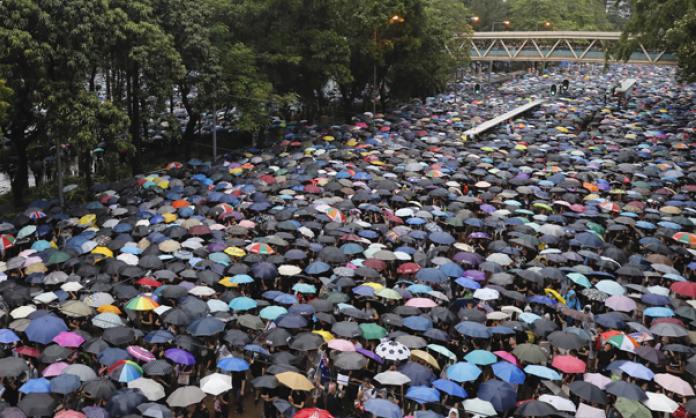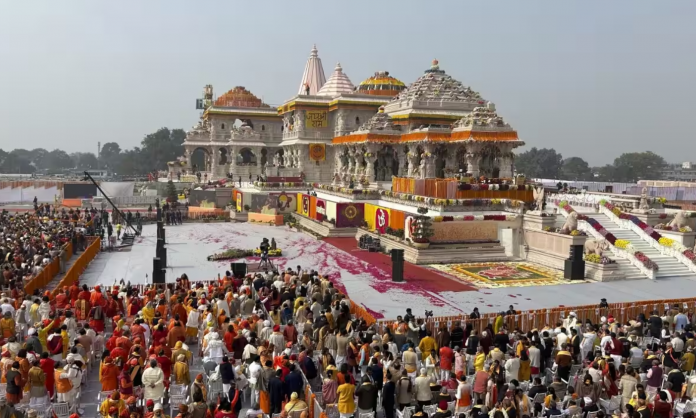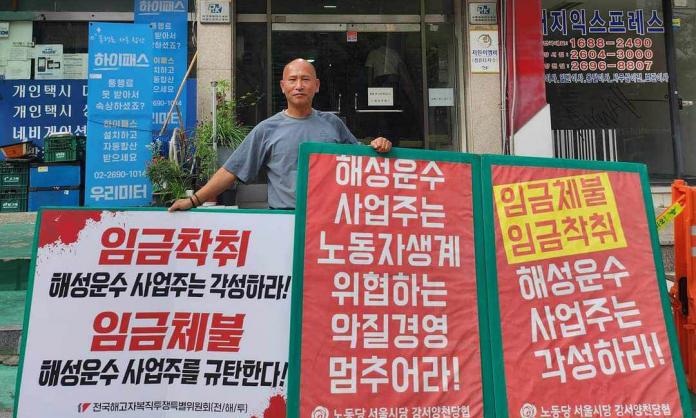The people of Hong Kong are in the fight of their lives against their own government and the Chinese Communist Party. Carrie Lam, the enclave’s chief executive, appointed by Beijing, earlier this year attempted to rush through an extradition bill that would allow Hong Kong citizens to be taken to mainland China to face charges for breaking Chinese laws that don’t apply in Hong Kong.
Since 1997, when it was formally handed over by the British, the enclave has been a Special Administrative Region of China, with its own protected freedoms and a separate legal system. The extradition bill threatens this. Since June it has provoked waves of protests. While Lam insists that the bill is dead in the water, millions of Hong Kongers continue to mobilise. They have five demands: withdraw the extradition bill, Carrie Lam resign, an inquiry into police brutality, all arrested protesters to be released and universal suffrage.
The following is an edited transcript of a speech given by Hong Kong socialist Au Loong Yu, via video link, at Perth’s annual Socialism conference on 18 August. Au is a socialist and writer. His latest book is China’s Rise: Strength and Fragility.
----------
The movement in Hong Kong has gone through three stages: the first was in June when millions of people took to the streets. The legislative assembly was besieged and there was violence. There was a radicalisation and the protests became a mass movement. Then Carrie Lam’s administration conceded by announcing that the extradition bill would be temporarily suspended. But discontent persisted. The Lam administration now has zero legitimacy. The labour movement should be mentioned: on 17 June, the confederation of trade unions, one of two, and the more democratic, called for a strike. It was not successful.
The second stage was characterised by demonstrations and the besieging of the legislature, with the radical youth then breaking into the legislature building. This was in July. It was a hugely radical action – if you did the same in Australia there would be a lot of casualties. But the July protest resulted in zero casualties. This was because the legislature was evacuated by police, which was probably to lure the radicals to break in in the first place and bring on a confrontation. Either way, this action pushed the movement to a higher level. But what followed was horrible: the police collaborated with the mafia in the Yuen Long region [right near the border with China] to carry out indiscriminate attacks in the train station to terrify residents and demonstrators. This antagonised people and even the most moderate liberals became angry.
So we saw a further radicalisation. There were also 16 or 17 demonstrations in different districts. We saw a broadening of the movement to the community level, which we have never seen before in Hong Kong. This was driven by the attack from the mafia. Hundreds of thousands of people took part. The 27 July protest was even more significant. Until then, the demonstrations were legal. But on 27 July, the police refused a licence for the first time. Hong Kong people are very moderate – or have been for many years. Ordinarily, they would have accepted this. Instead, hundreds of thousands of people took to the streets in defiance. This was the first time since the current movement started that there has been civil disobedience in such large numbers. This laid the groundwork for August.
August marked the third stage, which we are now in. Importantly, on 5 August, there was a second strike. This time it was successful. One sector of the Hong Kong economy defined the strike movement: the airport and flight industry employees. The Communist Party is now asking for the list of Cathay Pacific employees who went on strike. The union won’t release the list. It’s estimated that 300,000 or 400,000 people took part in the strike. Later in August, there were victory marches every two or three days. More people marched than did in July. So the mobilisations are continuing.
On 12 August, there were more huge occupations of the airport. This triggered a very angry response from the Communist Party. It sent armed police to the border, about 10,000 of them. This was just a show – there is a huge regiment already stationed in Hong Kong, consisting of nearly 8,000 Chinese troops, just next door to the Hong Kong government. If Beijing wants to crack down, it will use what is available.
********
In terms of the composition of the movement, it is notable that the political parties have played no leading role. They only play a logistical role, providing legal expertise and cohering a united civil front. The front involves unions and NGOs as well as political parties. The front has hosted the marches over the past two months. Without it, the radical youth would find themselves very isolated. We should not underestimate the role of the civil front, but it has offered no political leadership. It always waits for the radical youth to escalate things to a higher level.
The next component is the young people, especially the radical youth. There are roughly 5,000 to 10,000 young people, mainly students, who are ready to fight the police. It is hard to ascertain correct figures, but there are thousands prepared to use force. And many more thousands of youngsters are not ready to be at the front but are ready to support the radicals. This makes the movement dynamic. Supportive young people provide the visors, helmets, water and so on. Their political inclinations are varied and it is rare for them to join political organisations. They are young – high school and college aged. They genuinely believe in democracy but have a rudimentary understanding of politics. They can be xenophobic towards mainland Chinese, but this has not yet hardened into a program or perspective. At the same time many young people think it is important to win over mainland Chinese and to convince them of the five demands. So there are contradictory positions.
The third component is the xenophobic localists, who predate the Umbrella Movement of 2014. This current has been weakened since 2016. The Western media love these people, but their organisations are small, not more than two or three dozen, or at most below 100. But their politics are still dangerous because Hong Kong society has always been right wing, and people can take up the idea that mainlanders are the problem and should be expelled.
The fourth component is labour: labour organisation is not big in Hong Kong. It was good that 5 August was a relatively successful strike, especially since it was not well organised. Hong Kong unions don’t usually organise political strikes, but there is now talk of a third strike in early September.
Finally, the issue of so-called foreign intervention. If you look at the movement on the ground, you can see that accusations it is controlled or funded by the US government is plain silly. You have two million people taking to the streets. You have people abusing police, calling them pigs. It is silly to say they are controlled by any foreign power.
**********
The situation has now entered a deadlock. It is very clear Beijing doesn’t want to lose face and will remain hard line. The Lam government has lost all autonomy but will not retreat either. At the same time, the people are constantly being antagonised by more crackdowns. It might turn into a revolutionary situation. It can, if hundreds of thousands of ordinary citizens and workers merge with the radical youth and fight the police at the same time. We would then enter a revolutionary situation. But this is not easy. Hong Kong is too small to fight Beijing and many people know this. And the movement is not well organised at all and consciousness is very raw.
Nevertheless, the movement is significant for a number of reasons. First, it represents the rise of a new generation. A new generation that has grown up after the Chinese government took over Hong Kong. It gives a new energy to Hong Kong politics. The new generation is more radical. That they use the word “revolution” is very interesting. My generation fears revolution, which is why our generation stands no chance at all. But now we see a generation welcoming revolution. And they are young and throwing stones at the police for this revolution. This is very good even though also chaotic. It’s both a chance and a challenge.
The second reason is that this movement represents a clash between two visions of Hong Kong. One is the vision of Beijing and the other is those of the common people. The Beijing government has always treated Hong Kong as an entirely economic city. They have wanted to rob Hong Kong of its political identity and for Hong Kong to play no role in politics. This is understandable, given that Hong Kong is the only city in China with freedom of speech and freedom of political parties. But what is contradictory is that it is precisely this that has politicised the initially apolitical Hong Kong population. The huge politicisation of Hong Kong is not because of foreign intervention; the Communist Party has helped drive it.
Third, there is a clash of two visions inside Hong Kong – the common people’s and that of the upper class and tycoons. Thirty years ago, the middle class shared the same vision as the tycoons. Counterposed to the Beijing vision, the Hong Kong middle class aspired to a liberal form of capitalism for the island. For the past 30 years, the tycoons have not been committed to this vision. They have been proponents of Beijing’s view of totalitarian capitalism. So there is a conflict.
Finally, the Hong Kong crisis symbolises the strains of China’s rise. In my book, China’s Rise: Strength and Fragility, I argue that China contains contradictions: it is strong but also carries huge weaknesses. Hong Kong exposes China’s weakness. China is a 1984 type society. It is really difficult to make change there because the society is so harsh. But Hong Kong is different and is an important weakness.










